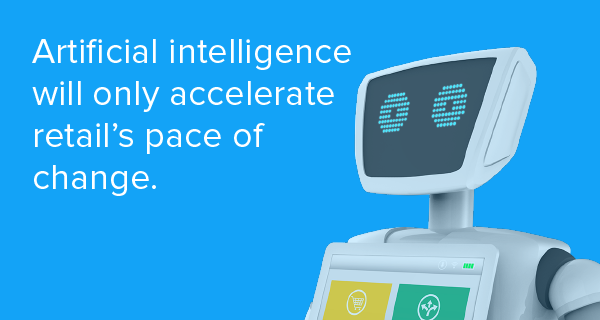Matt Gunn, Infor Retail
The robots have arrived and they’re becoming increasingly self-aware.
There’s broad acceptance that artificial intelligence is here. However, we’re still figuring out how to apply it across the retail business, be it supply chain, operations, omnichannel, or even in-store.
We are only in the early stages of applying AI to retail, and there’s a lot of white space when it comes to dreaming up new ways it might change the world. However, one thing is certain: as we increasingly rely on machines to assist us in our business-to-business and customer interactions, they will only be as good as the data we supply.
The big question is where to begin. Perhaps the simplest way to start is by picturing the outcome. For many in retail that begins with the customer and ends with execution across channels all the way back into the supply chain.
The customer is already there
Between the world of chatbots and voice assistants, customers have already started to embrace simple interactions with machines.
It’s artificial, yes, but it hardly counts as intelligence. Whether asking a chatbot about item availability or having Alexa order a fresh box of detergent, it’s easily done on today’s platforms. They’re basic queries or commands tied to a single store’s inventory. But what about the tough questions – what outfit to wear for a specific event, or for guidance on a home improvement project? The next phase of artificial intelligence is all about context and intent, the what and why behind someone’s shopping experience.
These contextual interactions will only become more prevalent. The next step for these digital assistants is to take trend analysis into effect, marry it up with personal preferences, and give better advice for what to buy and where to buy it from.
Here’s the catch – most retailers won’t ever own the dominant AI platforms of the near future. Google, Amazon, eBay, and Apple already have a solid head start. Not to mention all the emerging startups and vendors hard at work on their own solutions. But retailers probably shouldn’t commit R&D budget to creating their own artificial intelligence platforms to begin with. Those dollars will be better spent making sure the robots can find customers.
Aligning data for the new world
The next billion internet users will use voice and video over the good old-fashioned keyboard. Customers are moving beyond the browser, and now’s the time for retailers to align product data for visual and voice search.
People search differently with an AI digital assistant than they do in a browser-based search engine. Rather than a string of a few short words, shoppers tend to speak in full sentences. They ask questions and focus less on a specific product, but on its intended use. People expect AI assistants to tell them what to wear to a wedding, or the best way to get a stain out of their favouyrite shirt. They take a picture and ask the digital assistant to recreate that look with either the exact items or similar products that fit the customer’s budget. And as these AI powered digital assistants get more sophisticated, they’ll use machine learning to mine more product data to provide better results.
How does a retailer prepare for that kind of world? Firstly, by cleaning house – especially product data. Each product needs accurate and unique descriptions – metadata – to set it apart not only in text, but voice or visual search. There is no longer an excuse not to have images for every item in a portfolio. The next step is to make sure peripheral efforts – things like blogs or online ads – are aligned with the message and link back to the idea of how and why these products fit the bigger picture.
Artificial intelligence and the shift in consumer internet use will only accelerate retail’s pace of change. But retailers don’t necessarily need to build their own bot to survive. Starting with the consumer, organized data at the item level and consistency across an online presence, retailers can then exploit the underlying technology – business intelligence, merchandising systems, and even point of sale and supply chain software – to show the machines that a given business is relevant in this new, connected age.













